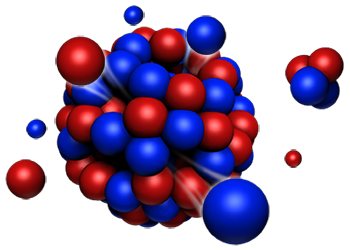Speaker
Description
Due to relatively low neutron fluxes, neutron experiments require sample volumes many orders of magnitude larger than comparable X-ray experiments. In the past, this need for large samples has severly limited the maximum pressures available for in situ neutron scattering. Although break-out experiments have been conducted, diffraction experiments are typically not conducted at pressures abvove ~20 GPa and inelastic experiments not at pressures above ~4 GPa.
Concerted efforts to address these challanges are underway at Oak Ridge National Laboratory. These efforts leverage the two neutron sources availabe, the Spallation Neutron Source (SNS) and the High Flux Isotope Reactor (HFIR), better collimation for high pressure cells and significant development and improvements in high pressure cell technology, specifically neutron diamond anvil cells. An express aim of these developments is the availability of these new capabilities to a wide audience in the neutron user program as well as new record experiments.
At ORNL, a group of neutron diamond anvil cells based on very large diamond anvils, single crystal anvils grown by chemical vapour deposition (CVD) and polycrystalline diamond anvils has been developed. These polycrystalline anvils are suitable for pressures to ~15 GPa and are typically used for the study of single crystal samples at a variety of diffractometers at SNS and HFIR. One advantage of these cells is their cooling capability (to ~5 K) while pressure is maintined through a spring mechanism. In contrast, the CVD anvils are typically used for diffraction studies that require above ~15 GPa. A record pressure of ~60 GPa has been achieved, whereby sufficient data quality was maintained for a full Rietveld refinement.
Furthermore, these CVD anvils are also used for diffraction and neutron spectroscopy studies focused on gaseous samples. Together with the development of a dedicated H2-rated gas loader, recent optimization in gasket materials and shapes now allows for high pressure neutron studies on H2 and other hydrides formed therefrom. This capability has not only been exploited for diffraction studies on SNS’s SNAP diffractometer but also its VISION spectrometer for record pressure studies on hydrogen.
Finally, a range of further development and adaptation beyond these DACs is underway. For example, a clamp cell has been modified to allow for in situ pressure measurements while the Paris-Edinburgh cell is currently being adapted for quasi-elastic experiments.
This presentation here will give an overview over these recent developments and achievements and their application to diverse science questions as well as discuss future developmental directions.
Acknowledgments: This work was supported by the Laboratory Directed Research Development (LDRD) program. The research was performed at ORNL’s Spallation Neutron Source and High Flux Isotope Reactor.

